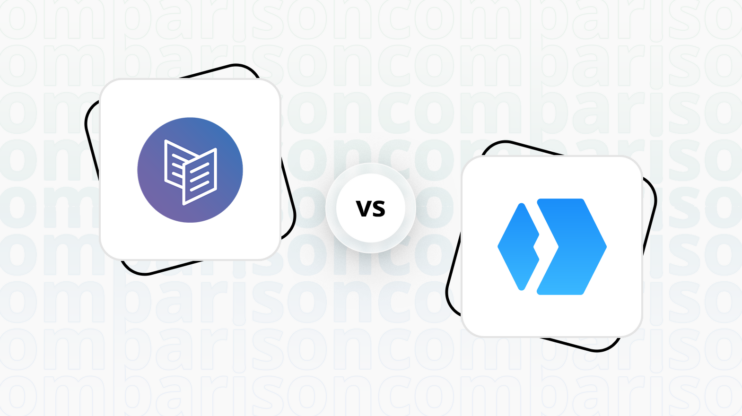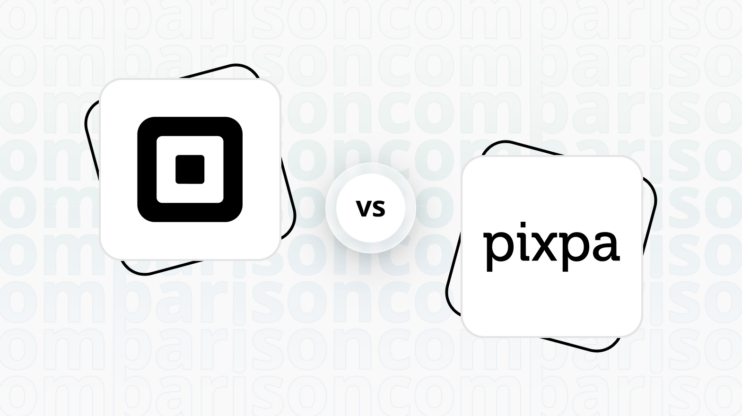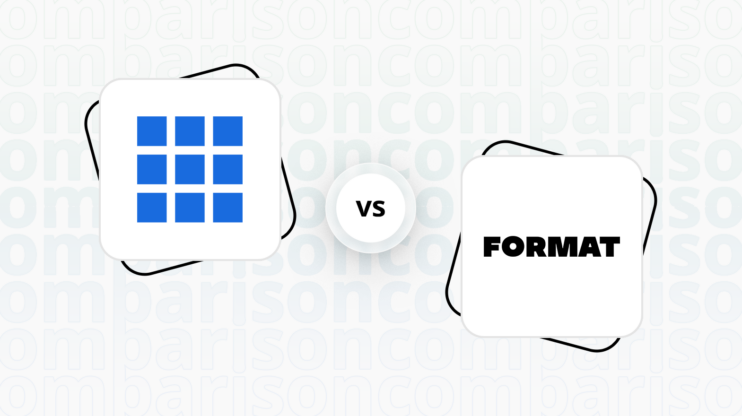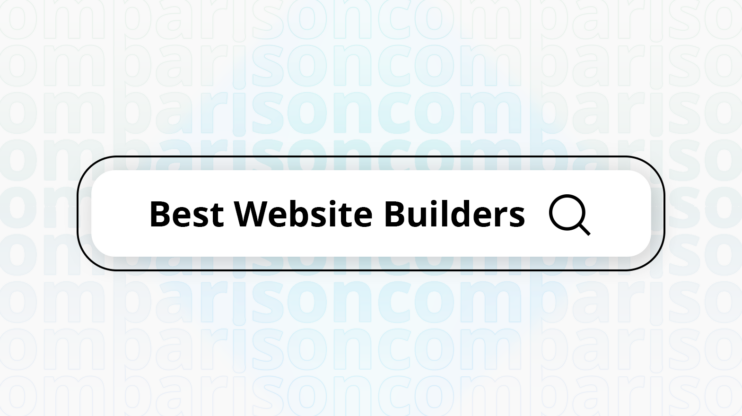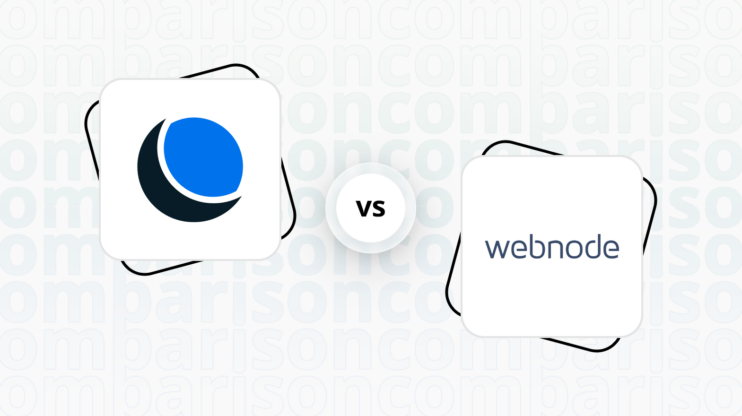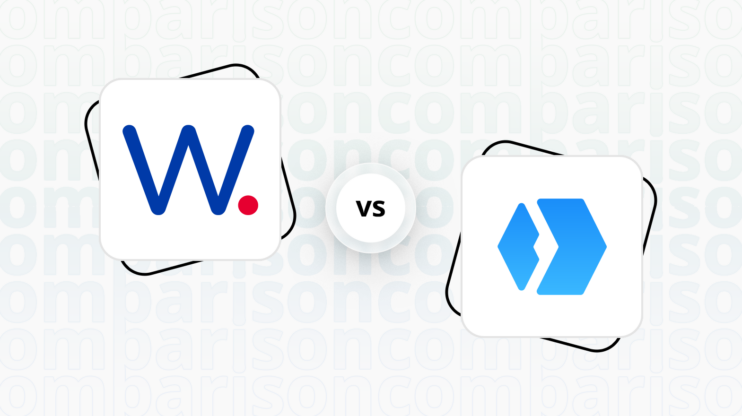Final verdict
Webflow and Sellfy both offer unique strengths, but they cater to different user needs and preferences.
-
Webflow (Overall Grade: 7.9/10)
excels in providing a powerful design experience with extensive customization options, making it ideal for professional designers and developers. It offers robust hosting, comprehensive marketing tools, and strong security features. When comparing Webflow vs Sellfy, Webflow stands out for its advanced design functionalities, superior website speed optimization, and comprehensive user management system. -
Sellfy (Overall Grade: 6.0/10)
is tailored for creators looking to sell a variety of products with ease. It offers a user-friendly interface, straightforward ecommerce setup, and integrated marketing tools. In the Webflow vs Sellfy comparison, Sellfy is the better choice for users who prioritize simplicity and ease of use, especially for selling digital and physical products without needing advanced technical skills.

|

|
|
|---|---|---|
|
Design functionalities & templates |
8.6 |
5.2 |
|
Ease of use |
7.5 |
7.8 |
|
Ecommerce |
8.5 |
6.8 |
|
Website Editors |
9.0 |
6.8 |
|
Product testing options |
6.3 |
7.3 |
|
Price |
8.0 |
7.9 |
|
Hosting quality |
8.9 |
7.3 |
|
Website speed optimization |
8.1 |
5.4 |
|
Plugins and integrations |
5.5 |
6.7 |
|
Marketing features |
7.8 |
7.1 |
|
Customer support |
8.3 |
5.8 |
|
Security |
7.8 |
7.2 |
|
AI capabilities |
8.3 |
0 |
|
User Management |
8.3 |
2.0 |
Best for ecommerce
 8.5
8.5
 6.8
6.8
Verdict
: Sellfy is ideal for creators looking for simplicity and ease of use, while Webflow offers extensive customization and advanced features for professional designers.
-
Webflow
: Known for its powerful design tools and flexible CMS, Webflow is perfect for those who need a highly customizable ecommerce platform. It supports a wide range of ecommerce functions, making it suitable for complex and professional online stores. However, when comparing Webflow vs Sellfy, Webflow might be more challenging for beginners due to its advanced features. -
Sellfy
: Its user-friendly interface is perfect for creators looking to sell digital, physical, subscription-based, and print-on-demand items. The platform offers a straightforward setup and management process, making it ideal for those who prioritize simplicity and ease of use over extensive customization options.
Best for informational & business websites
 8.6
8.6
 5.7
5.7
Verdict
: Webflow is the superior choice for creating informational and business websites, offering advanced design capabilities and robust hosting. Sellfy, while user-friendly, is more tailored to ecommerce and may not provide the same level of flexibility and design control.
-
Webflow
: Scoring 8.6, Webflow excels in creating custom, responsive websites with its powerful design tools and flexible CMS. It is ideal for professional designers and businesses looking for a comprehensive solution to build and manage their online presence. Webflow’s extensive template library and advanced customization options make it a top choice for informational websites. -
Sellfy
: With a score of 5.7, Sellfy is more focused on ecommerce, providing a simple and user-friendly platform for creators to sell products. While it offers some design templates and customization options, it lacks the advanced design functionalities and flexibility that Webflow provides. For those prioritizing ease of use and quick setup, Sellfy is a viable option, but it may not meet the needs of more complex informational websites.
Detailed comparison
Design functionalities & templates
Design FunctionalitiesRepresents how well each platform allows for creative design and customization of websites.Score Components:
- Template Variety (30%): Range and quality of design templates.
- Customization (30%): Flexibility and options for design alterations.
- User Interface (20%): Ease and intuitiveness of the design process.
- Responsiveness (10%): Adaptability to different devices and screen sizes.
- Innovation (10%): Unique design features and tools.
 8.6
8.6
 5.2
5.2
🏆
Winner: Webflow.
If you’re looking for a platform that offers more creative control and a wide array of design features, Webflow is the preferred choice.
Webflow delivers a robust design experience with a diverse range of template and customization options. Boasting over 1000 pre-built templates covering various industries and website types, including free and premium options, Webflow ensures a constantly evolving library for users. Templates are categorized for easy browsing, considering industry, website type, style, and features. The design customization features include a visual drag-and-drop editor for real-time adjustments, fine-grained control over every aspect of the design, and the ability to inject custom code for advanced users seeking additional personalization and unique functionalities.
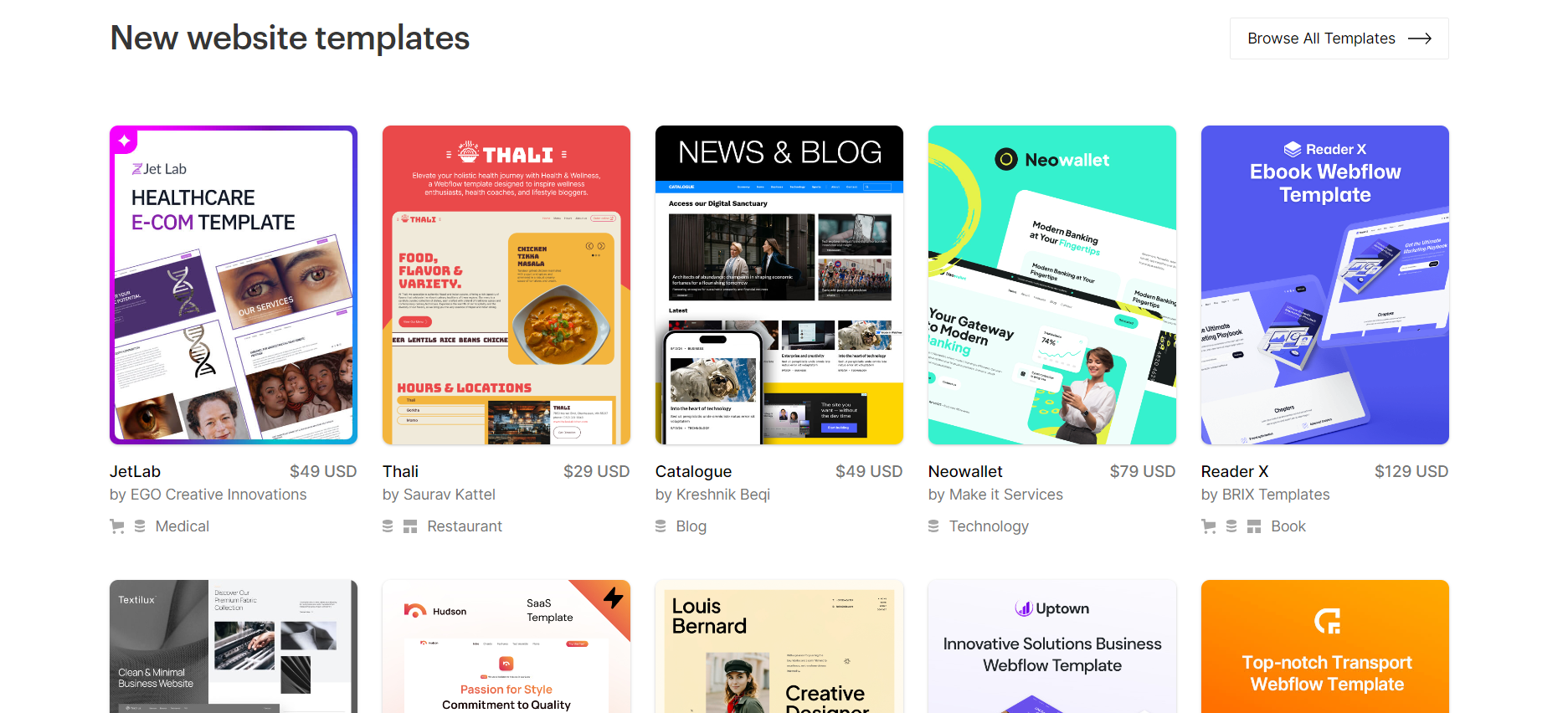
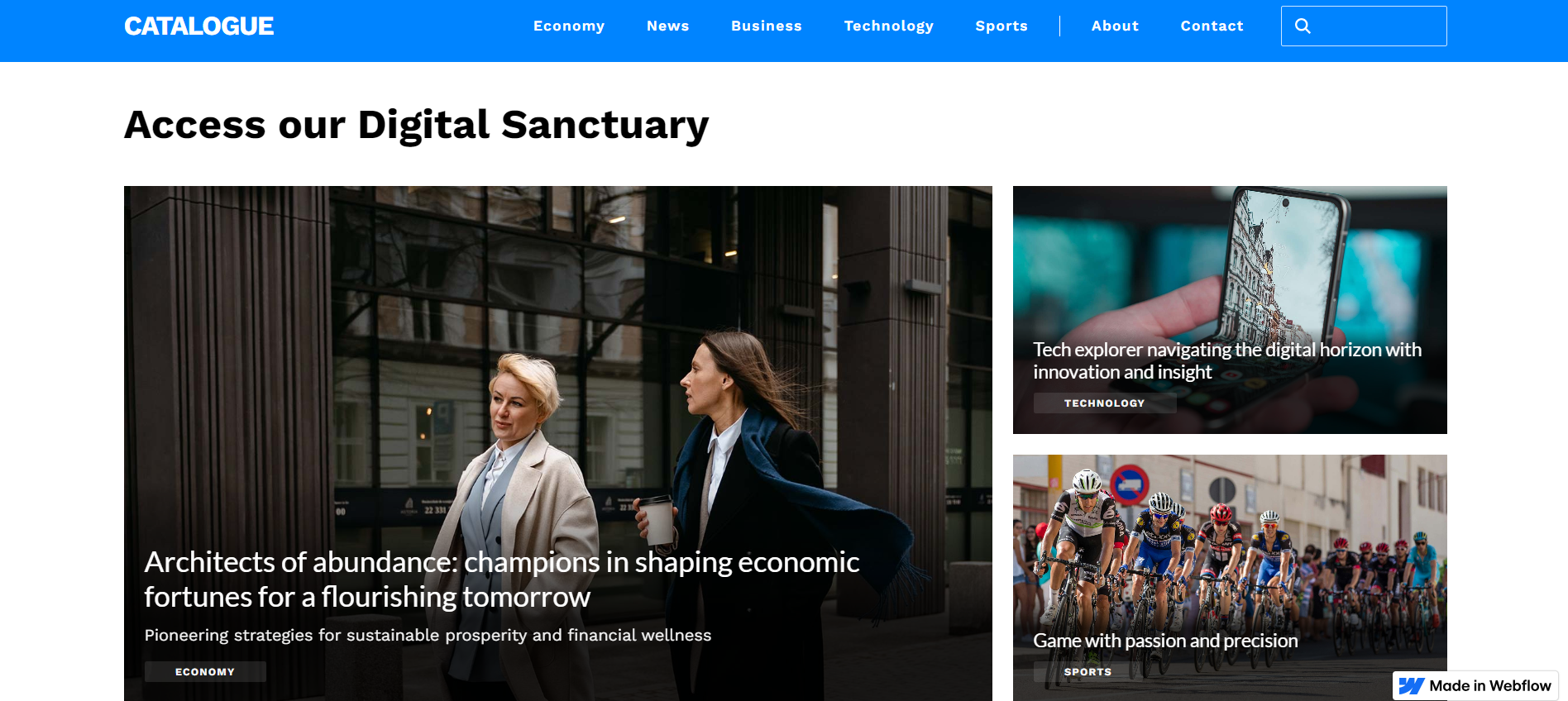
Compared to Webflow, Sellfy provides a collection of design templates through its theme store, located in the Store Customizer. Users have the option to preview these themes before applying them to their websites. As of the latest information, Sellfy offers five main theme options: Lumiére, Noir, Savant, Idée, and Mode. These themes cater to various aesthetic preferences and can be published to go live on a user’s website after selection and customization.
Get a head start on website creation with AI
Create a custom website tailored to your business needs 10X faster with 10Web AI Website Builder!
Ease of use
Ease of useReflects the platform’s overall user-friendliness.Score
Components:
- Learning curve (40%): Quickness and ease of getting started.
- Interface design (30%): Simplicity and intuitiveness of layout.
- User guidance (20%): Quality of tutorials and support.
- Flexibility (10%): Adaptability to various user skills.
 7.5
7.5
 7.8
7.8
🏆 Winner: Sellfy
. With a score of 7.8, Sellfy edges out Webflow, which scored 7.5. Sellfy’s user-friendly interface and straightforward website builder make it accessible for creators and small business owners without advanced technical skills. Webflow, while user-friendly for experienced designers and developers, may present a steeper learning curve for beginners.
Learning Resources
🏆 Winner: Webflow
. Both platforms offer learning resources, but Webflow’s comprehensive set of tutorials, courses, and active community forums provide a more robust learning environment for users.
For ecommerce
EcommerceMeasures the platform’s effectiveness in supporting online business activities.Score Components:
- Ecommerce themes and templates (20%): Variety and design of templates.
- Product management (25%): Ease of managing and organizing products.
- Payment options (25%): Variety and convenience of payment methods.
- Ecommerce features (20%): Features for managing an ecommerce store.
- Integration (10%): Compatibility with external e-commerce tools and services.
 8.5
8.5
 6.8
6.8
Webflow and Sellfy both offer robust ecommerce capabilities, but they cater to different needs. Webflow is a comprehensive solution for creating custom, responsive websites and online stores, offering extensive customization options, product management, and integrations with major payment gateways. On the other hand, Sellfy is tailored for creators looking to sell a wide array of products, including digital, physical, subscription-based, and print-on-demand items, with a focus on simplicity and ease of use.

|

|
|
|---|---|---|
|
Ecommerce themes and templates |
7.5 |
7.0 |
|
Product page customization |
8.3 |
6.5 |
|
Payment processing and commissions |
7.8 |
8.0 |
|
POS capabilities |
6.5 |
4.0 |
|
Payment gateways |
8.0 |
6.0 |
|
Product numbers |
7.0 |
7.5 |
|
Additional ecommerce features |
7.9 |
6.5 |
Webflow ecommerce features:
- Checkout and Payment Processing with Stripe, PayPal, etc.
- Marketing and Promotions
- Tax and Shipping calculations
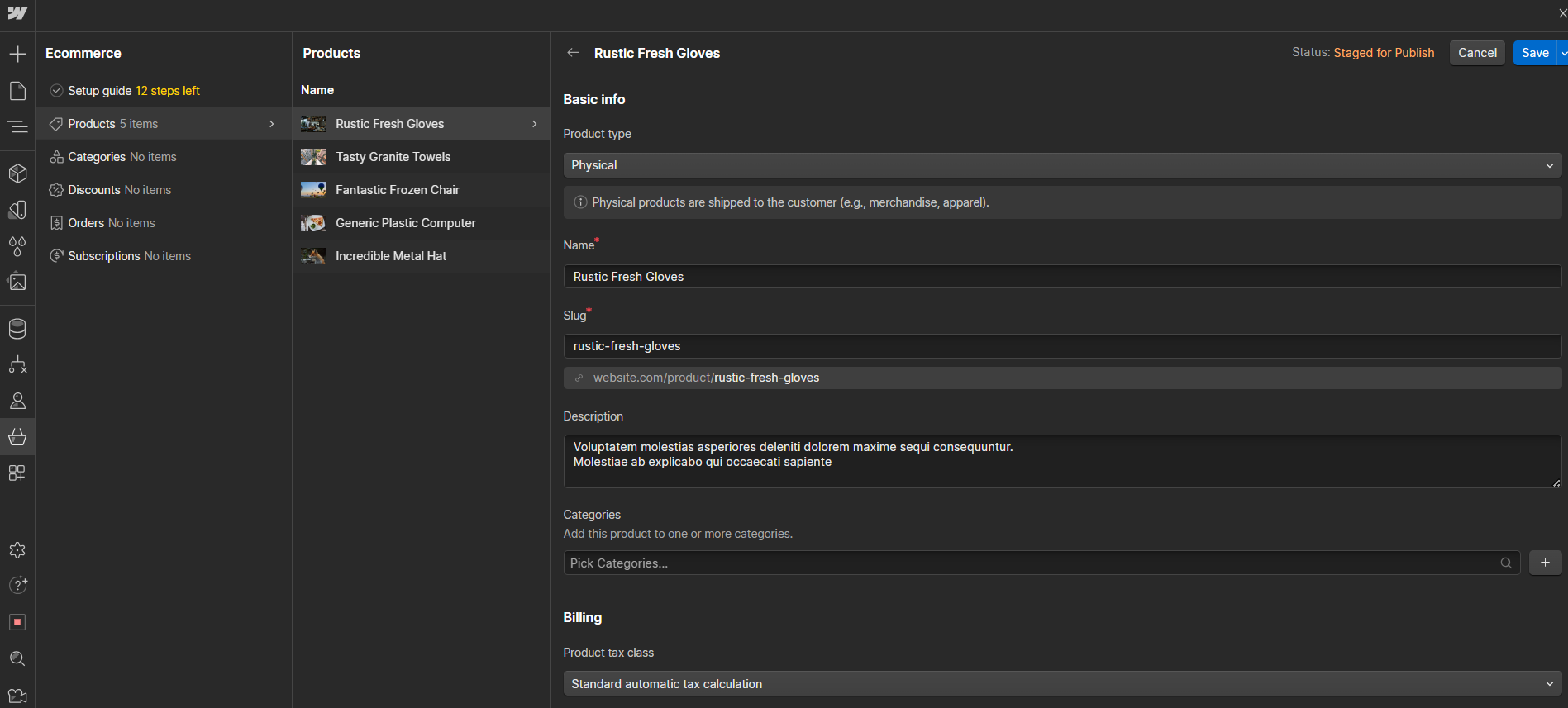
Sellfy ecommerce features:
- Product Listings
- Payment Gateways integration
- Product categories
Ecommerce themes & templates
Webflow offers a diverse range of ecommerce themes and templates designed to cater to various types of online stores. Each template comes equipped with built-in ecommerce functionality, allowing you to easily add products and manage your store without the need for coding. Sellfy, on the other hand, offers templates that are specifically designed for online stores.
Product page customization
Webflow offers extensive customization options for eCommerce product pages, allowing users to design and personalize their pages without coding. It provides tutorials for creating product pages from scratch, offers responsive templates for various devices, and allows users to add custom code and dynamic content using Webflow’s CMS for maximum customization flexibility. Sellfy supports a diverse range of products including digital goods like music, videos, ebooks, and software, as well as physical products and print-on-demand merchandise such as t-shirts and mugs. The platform enables the sale of subscriptions, offering a means for recurring revenue. Sellfy provides tools for product protection and piracy prevention, ensuring secure file hosting and delivery.
Payment processing
When it comes to payment processing, both Webflow and Sellfy integrate with leading payment gateways like Stripe and PayPal, allowing users to accept a wide range of payments, including credit card transactions directly from their websites. Sellfy does not charge transaction fees beyond its subscription cost, though payment processors’ standard fees apply. While Sellfy is robust in facilitating online sales with features for product management and marketing, it does not explicitly mention support for Point of Sale (POS) capabilities, indicating a focus on eCommerce rather than physical retail transactions. Webflow, with its versatile integrations, likely supports various transaction types, potentially including POS transactions for physical sales environments.
Website Editors
Website EditorsEvaluates the platforms’ website building and editing capabilities.Score Components:
- Customization tools (40%): Range and power of editing features.
- Editor usability (30%): User experience within the editor.
- Design flexibility (20%): Freedom in layout and design changes.
- Update and maintenance ease (10%): Simplicity of updating and maintaining the site.
 9.0
9.0
 6.8
6.8
🏆
Winner: Webflow
. With a score of 9.0, Webflow’s editor is praised for its intuitive visual interface that simplifies the process of designing and editing responsive websites without requiring deep technical knowledge. It offers a perfect blend of ease of use for beginners and the flexibility for more advanced users, enabling significant cost savings by allowing users to customize and manage their sites without hiring professionals.
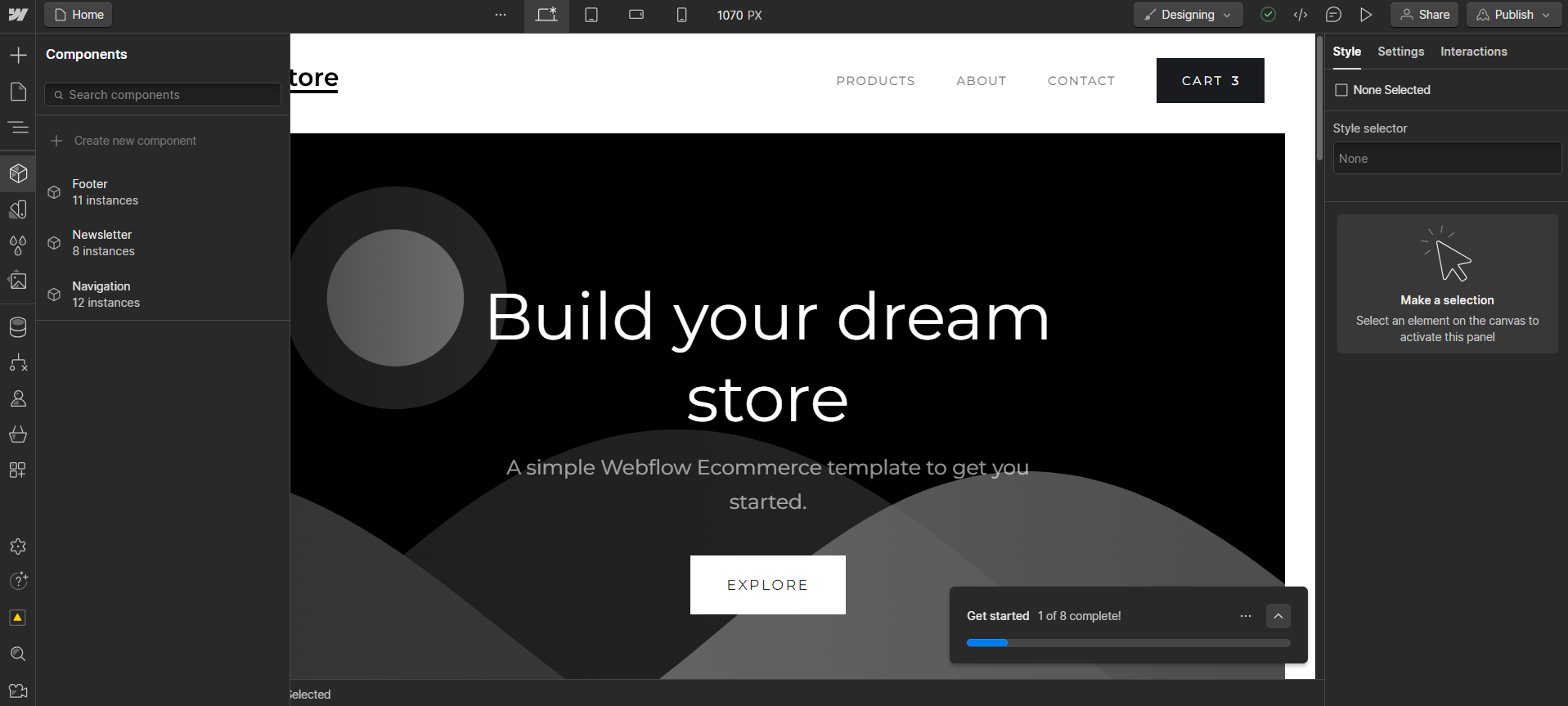
Sellfy’s editor, scoring 6.8, offers a straightforward and user-friendly platform for creating online stores, focusing on simplicity over advanced customization. It supports the sale of digital, physical, subscription-based, and print-on-demand products, alongside integrated marketing tools for promotion and sales optimization. Despite some limitations in design customization and app integrations, Sellfy aims to provide a comprehensive e-commerce solution for entrepreneurs and creators.
Mobile editor/app
 7.0
7.0
 7.5
7.5
🏆
Winner: Sellfy
. Both Webflow and Sellfy offer mobile solutions for managing your website, but they cater to different needs and skill levels. Webflow does not have an official mobile editor app, but there is a third-party app called EditFlow, created by a community member for Webflow users. Currently, the app is only available for iOS.
Sellfy, on the other hand, has a mobile app that allows store owners to manage their online stores on the go. It offers functionalities such as viewing store performance metrics, managing and tracking orders, and receiving customized notifications. Users can also access summary reports of their store’s performance on a daily, weekly, or monthly basis. However, it’s not possible to change the layout or the design of the website itself.
In summary, Sellfy receives a slightly higher rating due to its comprehensive store management features and user-friendly interface, while Webflow relies on a third-party app for mobile editing.
Product testing options
Product Testing OptionsAssesses the options for trying out platform features before commitment.Score Components:
- Trial quality (40%): Extent and usefulness of the trial or free version.
- Feature accessibility (30%): How many features are available to test.
- Trial duration (20%): Length of the trial period.
- Ease of transition (10%): Smoothness of moving from trial to paid plans.
 6.3
6.3
 7.3
7.3
Overall Result
:
Sellfy Wins
. Sellfy scores 7.3, outperforming Webflow which scores 6.3 in product testing options. Sellfy offers a 14-day free trial and allows testing of premium features during this period. It also provides a 30-day money-back guarantee. On the other hand, Webflow offers a free version with basic features but does not provide a trial version or a money-back guarantee.

|

|
|
|---|---|---|
|
Free Plan |
Yes |
No |
|
Trial Duration |
No |
14 days |
|
Testing Premium Features |
Basic features with free plan |
During the free trial |
|
Money Back Guarantee |
No |
30 days |
Price
PriceLooks at the cost-effectiveness and value for money of each platform.Score Components:
- Plan value (40%): What each pricing tier offers.
- Transparency and clarity (30%): Clearness of pricing structures.
- Flexibility of plans (20%): Range of options to suit different budgets.
- Hidden costs (10%): Additional expenses not included in the plan.
 8.0
8.0
 7.9
7.9
Webflow and Sellfy have similar pricing scores, but Webflow offers a wider range of plans, including an enterprise plan with custom pricing. Sellfy, on the other hand, does not have an enterprise plan.

|

|
|
|---|---|---|
|
Free |
Starter (Free): Limited features for new sites, including 2 static pages and 50 form submissions lifetime. |
No offering at this amount. |
|
$10-$20 |
Basic ($18/month): Suitable for simple sites with a custom domain, including basic SEO controls and 500 monthly form submissions. And 100 pages. Value for price: 6.5 |
No offering at this amount. |
|
$20-$30 |
CMS ($29/month): For content-driven sites with 2,000 CMS items, 1,000 monthly form submissions, and full API access. And 150 website pages. Value for price: 7.5 |
Starter ($29/month): Ideal for growing businesses with sales up to $10k/year. Offers unlimited products, digital and subscription products, domain connection, and 2,000 email credits. Annual savings available. Value for price: 7.5 |
|
$40-$45 |
Standard ($42/month): For new businesses with up to 500 ecommerce items, includes basic ecommerce features, and 2% transaction fee Value for price: 8.5 |
No offering at this amount. |
|
$45-$50 |
Business ($49/month): High traffic capacity, advanced features like site search, and up to 10 content editors. Value for price: 8.0 |
No offering at this amount. |
|
$70-$90 |
Plus ($84/month): Higher volume businesses with 0% transaction fees, up to 5,000 ecommerce items, and advanced features. Value for price: 9.0 |
Business ($79/month): Targets businesses with up to $50k in yearly sales, offering everything in the Starter plan plus 10,000 email credits, product and store design migration, product upselling, cart abandonment tools, and Sellfy branding removal. Value for price: 8.0 |
|
$100+ |
Advanced ($235/month): Scalable solution for large online stores with up to 15,000 ecommerce items and the highest caps and 0% transaction fees. Value for Price: 9.5 |
Premium ($159/month): For businesses with up to $200k/year in sales. Includes everything in the Business plan plus 50,000 email credits, product migration, and priority support. Annual savings are also offered. Value for Price: 8.5 |
location. As a result in rare cases the prices displayed here can differ from the ones you see on their
websites.
Hosting quality
Hosting
qualityExamines the reliability and performance of the hosting solutions.Score Components:
- Uptime (40%): Consistency and reliability of website availability.
- Speed (30%): Loading times and performance.
- Bandwidth and storage (20%): Sufficiency of resources provided.
- Data centers (10%): Quality and distribution of hosting infrastructure.
 8.9
8.9
 7.3
7.3
Winner: Webflow
. Webflow offers managed hosting with a 99.99% uptime and an uptime guarantee for its Enterprise plan. It uses a globally distributed network of data centers from Amazon Web Services (AWS) and Fastly. On the other hand, Sellfy also offers hosting with a 99.99% uptime but does not provide an uptime guarantee or disclose the type of hosting and the locations of its data centers.

|

|
|
|---|---|---|
|
Do they offer hosting? |
Yes, included in all paid plans |
Yes |
|
Data Centers: |
Webflow doesn’t actually have its own data centers. Instead, it relies on a globally distributed network of data centers from Amazon Web Services (AWS) and Fastly |
Sellfy does not disclose the locations of its data centers |
|
Type of hosting: |
Managed Hosting |
Sellfy does not disclose the hosting type |
|
Uptime: |
99.99% |
99.99% |
|
Uptime Guarantee: |
Only Enterprise plan, 99.99% |
No |
Website Speed Optimization
Website Speed OptimizationEvaluates optimization of website loading timesScore Components:
- PageSpeed Score (30%): Google’s score indicating performance optimization.
- Loading Time (30%): The average time until a website is fully interactive.
- Mobile Optimization (15%): Optimization effectiveness for mobile devices.
- Resource Optimization (15%): Optimizing images, scripts, and other heavy resources.
- CDN Usage (10%): Use of CDN to enhance speed across geolocations.
 8.1
8.1
 5.4
5.4
🏆 Winner: Webflow
Both Webflow and Sellfy have strategies in place for website speed optimization, but Webflow’s comprehensive approach and transparency about their performance metrics give them the edge.

|

|
|
|---|---|---|
|
Focus |
Custom Cache Settings, Custom Element Lazy Loading, Automatic Minification, Responsive templates, CDN |
Code Minification, Caching, Image Optimization |
|
Performance Tools |
Google Lighthouse, PageSpeed Insights |
Google PageSpeed Insights |
|
Key Strategies |
Custom Cache Settings, Custom Element Lazy Loading, Automatic Minification, Responsive templates, CDN |
Code Minification, Caching, Image Optimization |
|
Load Times |
Below 2 seconds average |
Varies depending on optimization and website complexity |
|
Page Speed Scores Range |
77.2/100 |
Varies depending on optimization and website complexity |
|
Core Web Vitals Improvement |
Improving components’ usability, and emphasis on LCP, FID and CLS |
No information provided |
Webflow’s approach to website speed optimization includes custom cache settings, custom element lazy loading, automatic minification, responsive templates, and a content delivery network (CDN). These strategies, combined with their focus on improving components’ usability and emphasis on Largest Contentful Paint (LCP), First Input Delay (FID), and Cumulative Layout Shift (CLS), result in an average load time of below 2 seconds and a PageSpeed score of 77.2/100.
Sellfy, on the other hand, focuses on code minification, caching, and image optimization for website speed optimization. However, they do not provide any specific information on their Core Web Vitals improvements, and their load times and PageSpeed scores vary depending on optimization and website complexity. This lack of transparency and specific performance metrics puts them at a disadvantage compared to Webflow.
Get a head start on website creation with AI
Create a custom website tailored to your business needs 10X faster with 10Web AI Website Builder!
Plugins and integrations
Plugins and integrationsMeasures the range and effectiveness of additional plugins and integrations.Score Components:
- Variety of options (40%): Range of available add-ons.
- Integration smoothness (30%): Ease of integrating plugins into the site.
- Quality of plugins (20%): Functionality and reliability of the options.
- Custom integration capabilities (10%): Support for custom or third-party integrations.
 5.5
5.5
 6.7
6.7
🏆 Winner: Sellfy.
Sellfy scores 6.7, offering a variety of integrations that enhance ecommerce functionality and automate workflows. Webflow, with a score of 5.5, doesn’t have plugins or extensions in the traditional sense but offers a built-in library of website elements and functionalities. However, Sellfy’s focus on ecommerce and the ability to integrate with a wide range of services gives it the edge in this category.
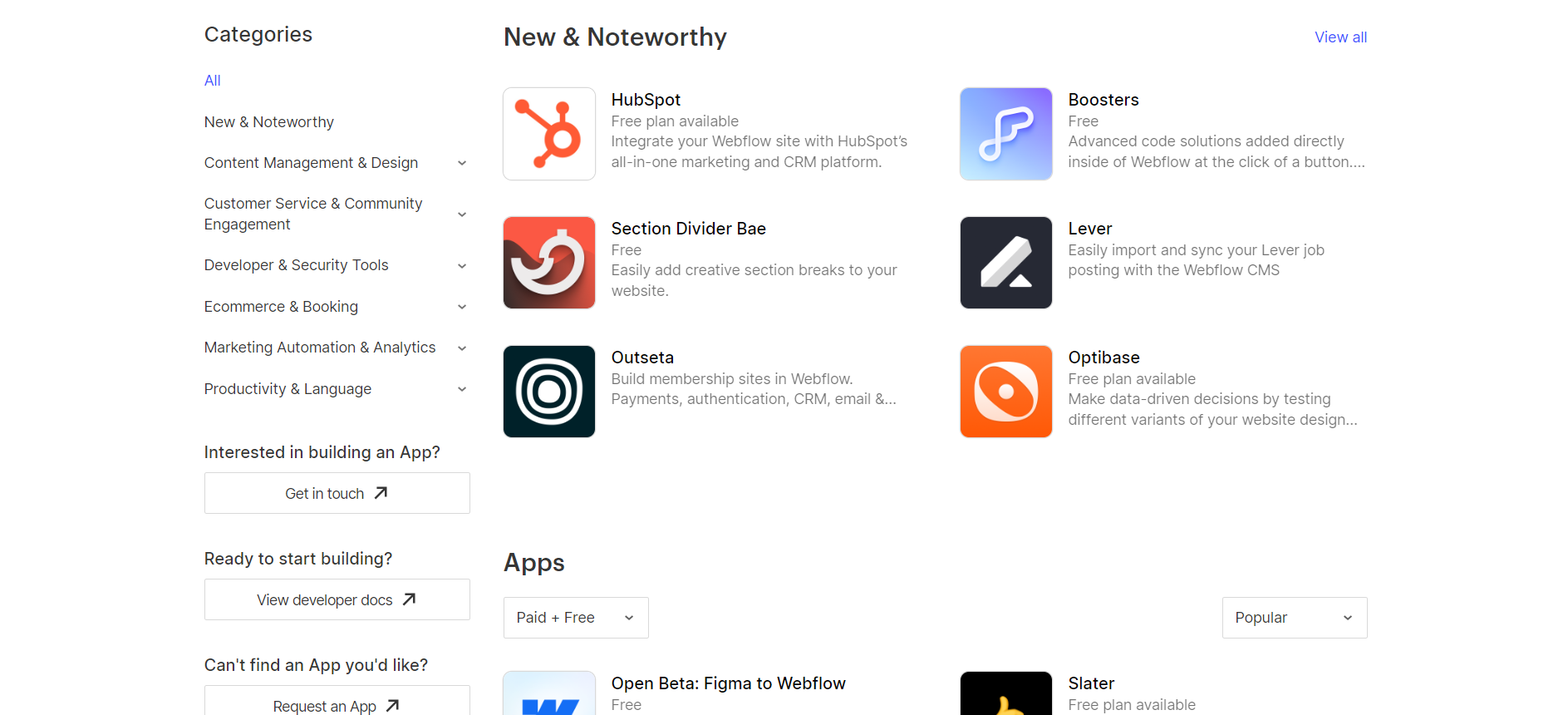
Marketing Features
Design FunctionalitiesRepresents how well each platform allows for creative design and customization of websites.Score Components:
- Template Variety (30%): Range and quality of design templates.
- Customization (30%): Flexibility and options for design alterations.
- User Interface (20%): Ease and intuitiveness of the design process.
- Responsiveness (10%): Adaptability to different devices and screen sizes.
- Innovation (10%): Unique design features and tools.
 7.8
7.8
 7.1
7.1
🏆
Overall Winner: Webflow
. Webflow stands out for its comprehensive marketing tools, especially in SEO, email marketing, and analytics. Sellfy, while lacking in blogging features, offers a straightforward ecommerce solution with basic customization options and social media integrations.

|

|
|
|---|---|---|
|
SEO Tools |
|
|
|
Email Marketing |
|
|
|
Blogging |
|
|
|
Social Media Integration |
Simplifies content sharing and audience engagement on major social platforms |
Enables selling directly on social media and through custom storefronts |
|
Analytics and Reporting |
Integrates with Google Analytics for comprehensive web traffic and behavior analysis |
Provides insights into sales, traffic, conversion rates, and product performance |
|
Ads and Promotions |
Supports ad and promotion management through integration with platforms like Google Optimize |
Offers email marketing, discount codes, upselling and cross-selling options |
Customer Support
Customer supportEvaluates the quality and availability of support options.Score Components:
- Response time (40%): Speed of support responses.
- Support quality (30%): Effectiveness and helpfulness of the support.
- Availability (20%): Range of support channels (phone, chat, email).
- Resource richness (10%): Quality of self-help and educational materials.
 8.3
8.3
 5.8
5.8
🏆 Winner: Webflow
. In the Webflow vs Sellfy comparison, Webflow takes the lead with a customer support score of 8.3. Webflow offers 24/7 support through live chat, email, and a community forum, ensuring users can get help whenever they need it. Additionally, Webflow provides extensive documentation and video tutorials, making it easier for users to navigate the platform and resolve issues independently. For enterprise users, Webflow offers a dedicated Customer Success Manager and priority support, further enhancing the support experience.
Sellfy, on the other hand, has a customer support score of 5.8. While Sellfy also offers 24/7 support, it lacks phone and live chat options, limiting users to email and possibly a knowledge base for self-service. This can be a drawback for users who prefer real-time assistance. Furthermore, Sellfy does not provide specialized support for enterprise users, which may be a consideration for larger businesses looking for more comprehensive support solutions.
Security
SecurityLooks at the platforms’ security measures and data protection.Score Components:
- Data protection (40%): Safeguards for user and customer data.
- SSL and encryption (30%): Implementation of secure connections.
- Compliance (20%): Adherence to industry security standards.
- Regular updates (10%): Frequency of security updates and patches.
 7.8
7.8
 7.2
7.2
🏆
Winner: Webflow
. Webflow takes the lead in security with a score of 7.8, compared to Sellfy’s 7.2. Webflow ensures the privacy and security of user data by implementing robust encryption techniques and strict access controls. They also regularly update their systems and conduct audits to identify and address any potential vulnerabilities, ensuring that user information remains confidential and protected. Webflow also uses SSL encryption to secure data transmission, regular security audits and updates to protect against vulnerabilities, and implements strong password requirements for user accounts. Additionally, Webflow offers two-factor authentication for added security.
Sellfy, on the other hand, employs several security measures to safeguard sellers and their digital products from unauthorized access, fraud, and piracy. These measures include the use of secure payment processors like Stripe and PayPal, unique download links for each purchase, limited download attempts, and additional tools like PDF stamping to deter content sharing. While these strategies significantly mitigate risks, Sellfy also recognizes the inherent challenges of completely eliminating piracy in the digital space. The platform takes a pragmatic approach by providing tools that both protect creators’ content and assist in handling disputes effectively.
AI Capabilities
AI capabilitiesMeasures the effectiveness of AI-driven features and tools.Score Components:
- Automation efficiency (40%): Impact of AI on streamlining processes.
- Personalization (30%): AI-driven customization for users or customers.
- AI-Assisted design (20%): Role of AI in website design and functionality.
- Data analysis (10%): Use of AI in interpreting user data and analytics.
 8.3
8.3
 0
0

|

|
|
|---|---|---|
|
AI Builder |
In development |
Not available |
|
AI Ecommerce features |
Not available |
Not available |
|
AI content generation |
In development |
Not available |
|
Additional AI features |
In development |
Not available |
🏆 Winner: Webflow
. Although neither Webflow nor Sellfy currently have AI capabilities, Webflow has announced plans to introduce AI features in the future. These features are expected to improve the visual development learning journey, create and iterate designs faster with an AI copilot, and offer AI-customized templates for quicker website creation. On the other hand, Sellfy does not have any AI capabilities and there is no information about any plans to introduce them in the future. Therefore, based on potential AI capabilities, Webflow is the winner in this category.
User Management
User ManagementAssesses the platforms’ capabilities in managing user roles, permissions, and accessibility.Score Components:
- Role Customization (40%): Flexibility in creating and defining user roles and
permissions. - Ease of Management (30%): User interface and tools for managing users.
- Access Control (20%): Effectiveness of access control measures for different user
levels. - Scalability (10%): Ability to manage a growing number of users efficiently.
 8.3
8.3
 2.0
2.0
🏆 Winner: Webflow
. Webflow offers a comprehensive user management system with various roles and access levels, while Sellfy does not support adding multiple users or staff to a single account.
Webflow User Roles and Access Levels:
| Role | Description | Access Highlights |
|---|---|---|
| Workspace Owner | Full control over Workspace settings and member management. | Edit settings, manage billing, access/edit all sites, invite/remove members, manage permissions. |
| Workspace Admin | Similar to the owner with some restrictions. | Edit settings, manage billing, access/edit all sites, invite/remove members (except owner), manage permissions. |
| Workspace Member | Limited control focused on site interaction. | Download invoices, access/edit sites, invite members. |
| Workspace Guest | Temporary collaborators with limited access. | Access/edit sites. |
| Workspace Commenter | Limited to commenting for feedback on sites. | Create/view/resolve comments, preview sites. |
| Site Admin | Full control at the site level. | Manage permissions, delete/transfer sites, billing management, design and publish changes. |
| Can Design | Design capabilities with some restrictions on publishing. | Design in Designer, create/modify classes and components, publish changes with permission. |
| Can Design (Limited) | Restricted design capabilities for Enterprise customers. | Create new classes, modify created classes, limited publishing capabilities. |
| Can Edit | Content editing without full design privileges. | Edit text/links/images, manage assets, publish Collection items and Ecommerce products. |
| Can Comment (Site Level) | Commenting for feedback at the site level. | Create/view/resolve comments, preview sites. |
Sellfy User Management:
Sellfy does not support adding multiple users or staff to a single account.
Additional Features

|

|
|
|---|---|---|
|
SSL Certificate |
|
|
|
Custom Domain |
|
|
|
Free Custom Domain Included |
|
|
|
International Domains |
|
|
|
Mobile Responsive |
|
|
|
Page Speed |
|
|
|
Website Builder Mobile App |
|
|
|
Convert a Website To An App |
|
|
|
Website Analytics |
|
|
|
Multilingual Sites |
|
|
|
Multiple Users |
|
|
User Feedback
Webflow receives high praise for its user-friendly interface, eliminating the need for coding while offering extensive design flexibility. Users appreciate its scalability, cost-effectiveness, and seamless integration of essential features like forms and CMS. However, some users note a slight learning curve and occasional limitations, particularly in ecommerce functionalities and content management. Overall, Webflow proves to be a powerful tool for building and managing websites, offering robust features for both beginners and experienced developers, albeit with some room for improvement in certain areas like collaborative editing and content management.
The user feedback on Sellfy highlights its strengths in providing an efficient, compact online store setup that caters to specific needs with affordable pricing, including a 14-day trial period to familiarize users with the product. Many appreciate its user-friendly interface, internal marketing tools, and customization options, which enable sellers to tailor their storefronts to their brand, along with integrations for payment processing like PayPal and Stripe. However, criticisms include issues with mobile site speed, a desire for clearer insights, limitations on customization, and some customer service inefficiencies.
The making of this blog
We followed a clear, step-by-step process to write and research this article.
FAQ
Which platform is better for advanced design and customization, Webflow or Sellfy?
Is Sellfy or Webflow easier to use for beginners?
Which platform offers better ecommerce features, Webflow or Sellfy?
How do Webflow and Sellfy compare in terms of website speed and hosting quality?
Can I manage multiple users or staff accounts on Webflow and Sellfy?
Which platform has better customer support, Webflow or Sellfy?
Are there any AI capabilities available on Webflow or Sellfy?










